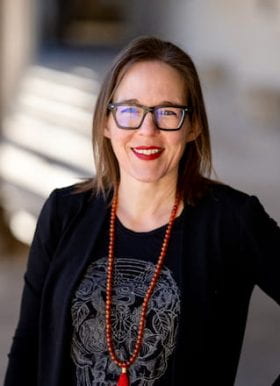
My next book project, “Death Is Obsolete: Staging Resurrection in the Age of AI” explores the recent phenomenon of “digital resurrection”, using artificial intelligence and spatial computing to bring back dead people and destroyed cultural heritage sites. The chapter that most directly engages questions of race and ethnicity analyzes two mobile AR apps: Homelands, which overlays animations of ancient Abenaki Peoples onto the bluffs of New Hampshire, and Greenwood Rising, which superimposes archival images of residents and storefronts onto the buildings that exist today at this site of the 1921 Tulsa race massacre. As I describe, at stake in both resurrections is resistance to the displacement of Indigenous and Black communities and to trauma tourism. Instead of archival images of massacred and hanged bodies, Homelands and Greenwood Rising show peaceful, prosperous bodies, a choice that reclaims the power to represent a community. And in my digital praxis, I am beginning a new project using AR, AI, and motion capture to recreate and remediate Henry Box Brown’s 1850 panorama exhibition, “Mirror of Slavery.”